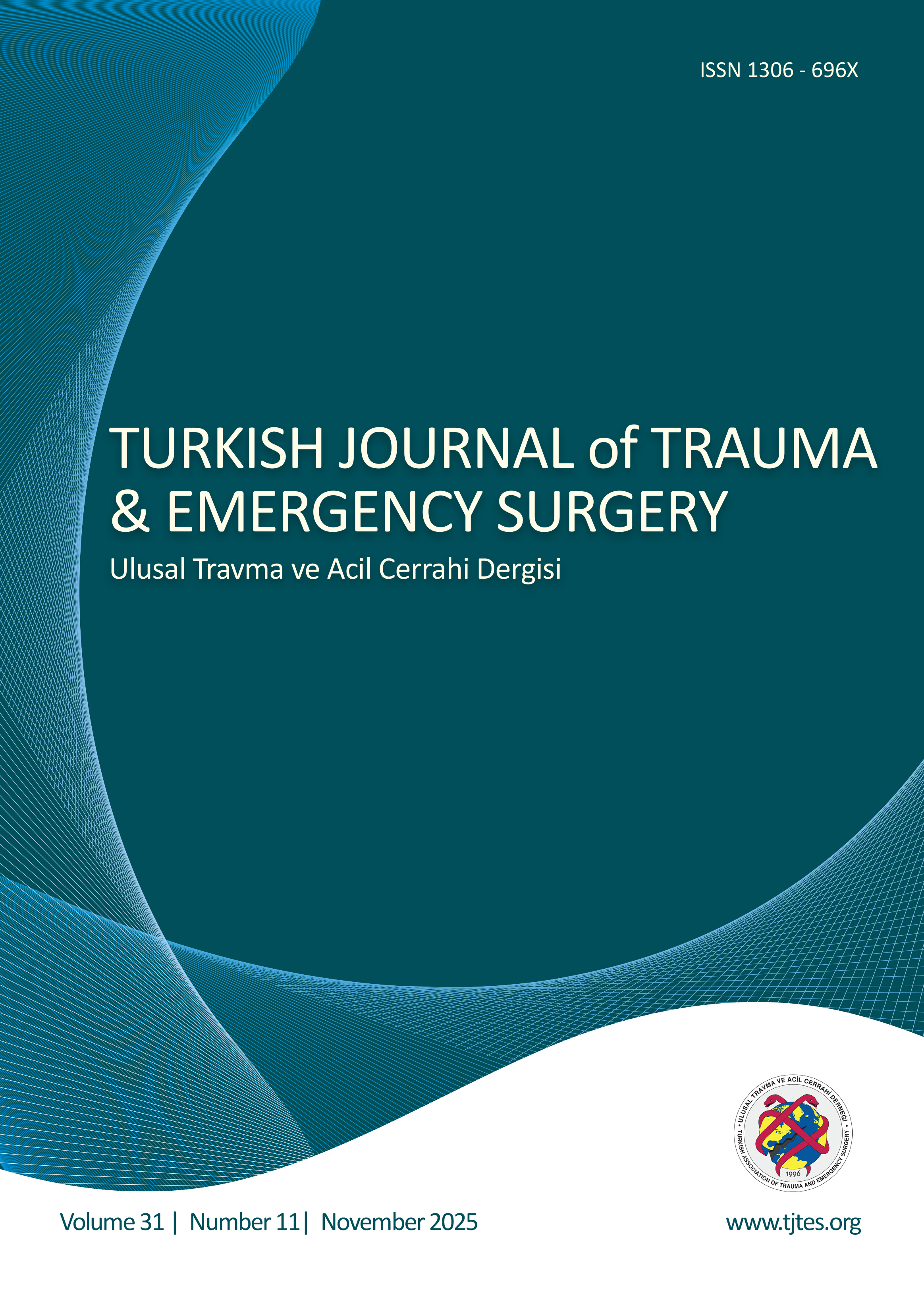Hızlı Arama
Doğu Karadeniz Bölgesinde ölümle sonuçlanan kara avcılığı ilişkili yaralanmalar
Sait Özsoy1, Huseyin Cetin Ketenci2, Mehmet Askay21Sağlık Bilimleri Üniversitesi, Gülhane Tıp Fakültesi, Adli Tıp Anabilim Dalı, Ankara; Adli Tıp Kurumu Ankara Adli Tıp Grup Başkanlığı, Ankara2Recep Tayyip Erdoğan Üniversitesi Tıp Fakültesi, Adli Tıp Anabilim Dalı, Rize
AMAÇ: Avlanma, avlanacak canlının özelliğine göre çeşitli silah veya aletlerin profesyonel şekilde kullanılmasını gerektirir. Avlanma esnasında farklı sebeplerle (ateşli silah yaralanması, yüksekten düşme, vahşi hayvan saldırısı veya doğal vb.) ölümler meydana gelebilir. Bu olguların adli olgu bildirimi ilk müdahaleyi yapan hekim tarafından yapılmalıdır. Giriş ve çıkış yaralarının tespiti, tıbbi tedavi öncesi yaraların fotoğrafının çekilmesi, radyolojik görüntülemede yabancı cisimlerin şekil ve büyüklüklerinin net olarak belirlenmesi ateşli silahın cinsi, atış sayısı ve atış mesafesinin saptanmasında faydalı olacaktır.
GEREÇ VE YÖNTEM: Adli Tıp Kurumu Trabzon Grup Başkanlığında 20072016 yılları arasında otopsileri yapılmış olgular geriye dönük olarak incelendi. Av faaliyetleri sırasında ölen 26 (%4.1) olgu değerlendirmeye alındı. Tüm olgulara toksikolojik inceleme yapılmıştır. Olay yeri inceleme tutanakları, avcılık malzemeleri, yara özellikleri ve ölüm nedenleri incelendi.
BULGULAR: Olguların tamamı erkek (%92.3; n=24), ortalama yaş 42.5 yıl (1481; SD: ±17.4) idi. Olayların %42.3ünün kışın, %80.8inin (n=21) gündüz saatlerinde, %69.2sinin tarla gibi açık alanlarda ve %26.9unun ormanlık alanda meydana geldiği saptandı. Ölümlerin %88.5inin av tüfeği saçma tanesi/şevrotin (iri saçma) yaraları, %7.7sinin (n=2) uçurumdan düşme ve %3.8inin yaban domuzu saldırısı (vasküler yaralanma) nedeniyle olduğu belirlendi. Atışların %57.7sinin uzak, %19.2sinin yakın ve %11.5inin bitişik atış mesafesinden yapıldığı belirlendi. Faillerin %73.9u başka bir avcı iken %26.1inde ölen kişinin kendisi olduğu tespit edildi. Yaralanmaların %42.3ü göğüs ve %38.4ünün baş-boyun bölgesinde meydana geldiği belirlendi. Olguların ¾ünde görgü tanığı olmasına rağmen olguların %96.2sine ilk yardım yapılmadığı belirlendi. Sadece üç olguda (%11.5) etil alkol tespit edildi.
TARTIŞMA: Avcılık ve tıbbi ilk yardım eğitimlerinin benzer olayları azaltabileceği düşünülmektedir. Gerekli denetim mekanizmalarının çalışması önemlidir. İlave olarak, adli tıp uzmanlarının yargılama sonuçlarına ulaşabilmesinin benzer olaylarda yeni davranış tarzlarının geliştirilmesi açısından faydalı olacağı düşünülmektedir.
Anahtar Kelimeler: Av tüfeği, avcılık, kazara düşme, otopsi; yabani hayvan saldırısı; yaralar.
Fatal land hunting-related injuries in the Eastern Black Sea region-Turkey
Sait Özsoy1, Huseyin Cetin Ketenci2, Mehmet Askay21Department of Forensic Medicine, University of Health Sciences, Gülhane Faculty of Medicine, Ankara-Türkiye; The Council of Forensic Medicine Ankara Group Chairmanship, Ankara-Türkiye2Department of Forensic Medicine, Recep Tayyip Erdoğan University Faculty of Medicine, Rize-Türkiye
BACKGROUND: Hunting requires the use of various weapons or tools as professionals according to the characteristics of the creature to be hunted. Deaths during hunting activities may occur as a result of different reasons (firearm wounds, falling from a height, wild animal attack, or natural, etc.). These events forensic reports are prepared by the physician who performed the first intervention. Identification of wounds, taking measurement photographs of the wounds before treatment, specifying the shape/sizes of foreign bodies in radiological imaging will be beneficial for determining the type of firearm, the number of shots, and the shooting distance.
METHODS: The cases that performed autopsy between 2007 and 2016 at The Council of Forensic Medicine Trabzon Group Chairmanship were analyzed, retrospectively. Twenty-six (4.1%) deceased were examined. Crime scene investigation reports, hunting equipment, wound characteristics, and causes of death were investigated.
RESULTS: All of our cases consisted of men (92.3%; n=24) with a mean age of 42.5 years (1481; SD: ± 17.4). It was determined that 42.3% of the incidents occurred in winter, 80.8% (n=21) occurred in the daytime, 69.2% occurred in open areas such as fields, and 26.9% occurred in forested land. It was found that 88.5% of the deaths were caused by shotgun pellet/buckshot injuries, 7.7% (n=2) by falling off a cliff, and 3.8% by wild boar attacks (vascular injury). It was determined that 57.7% of the shots were made from long shooting distance, 19.2% were made from close range, and 11.5% were made from contact distance. It was found that 73.9% of the perpetrators were other hunters and 26.1% were the deceased person himself. It was determined that 42.3% of the injuries occurred in the chest and 38.4% in the head-and-neck region. It was determined that 96.2% of the cases did not undergo first aid intervention even though there were eyewitnesses in approximately ¾ of the cases. Ethyl alcohol was detected in only 3 cases (11.5%).
CONCLUSION: It is thought that similar deaths can be prevented to a certain extent thanks to the hunting and medical first aid training to be given by the local governments. Risk control mechanisms must work properly. Besides, it is necessary to ensure that forensic experts can access the results of the proceedings in such cases. It is thought that this will be more beneficial in terms of developing new behavior styles in similar events.
Keywords: Accidental falls, autopsy, hunting, shotgun; wild animal attack; wounds and injuries.
Makale Dili: İngilizce





